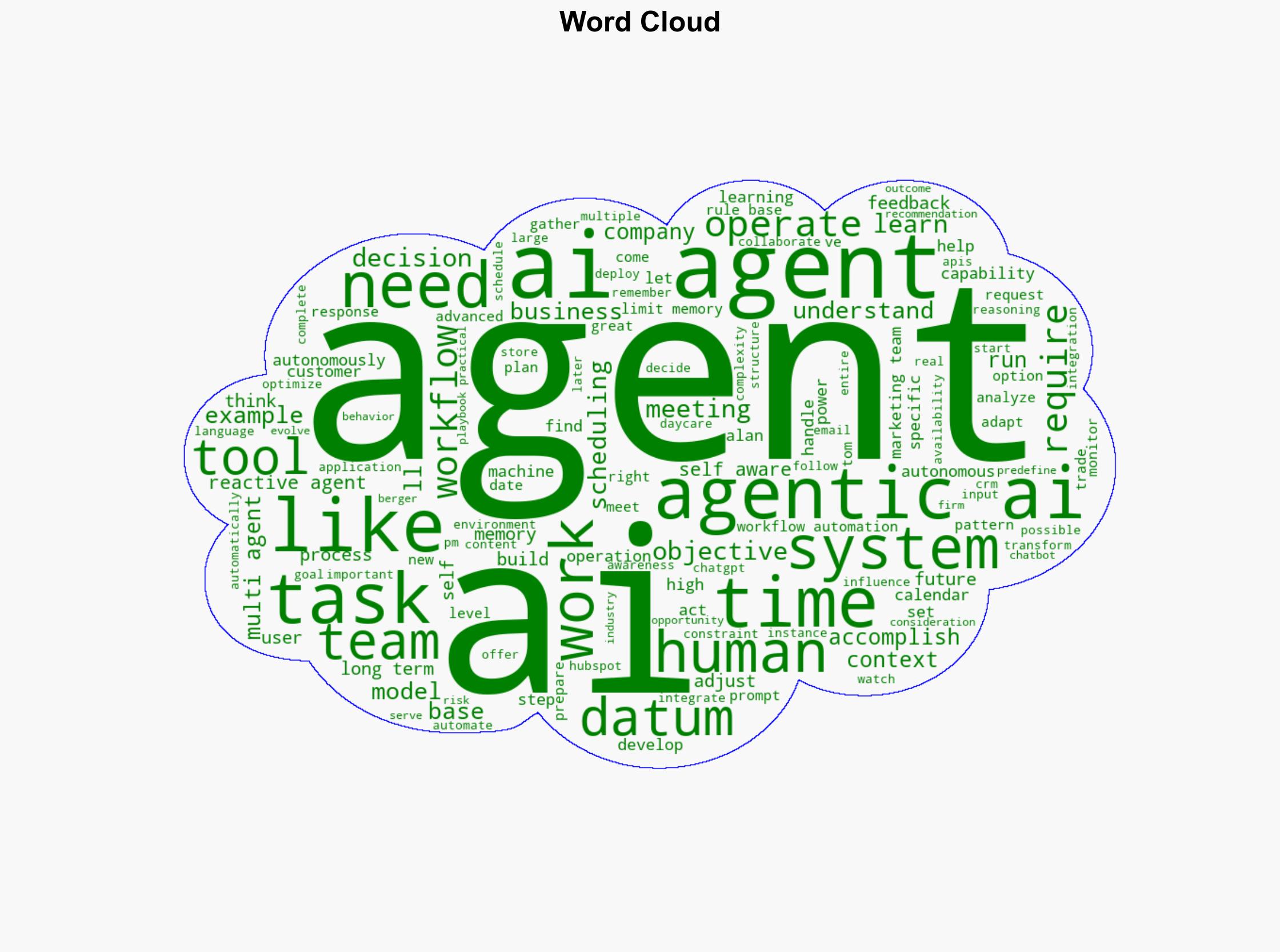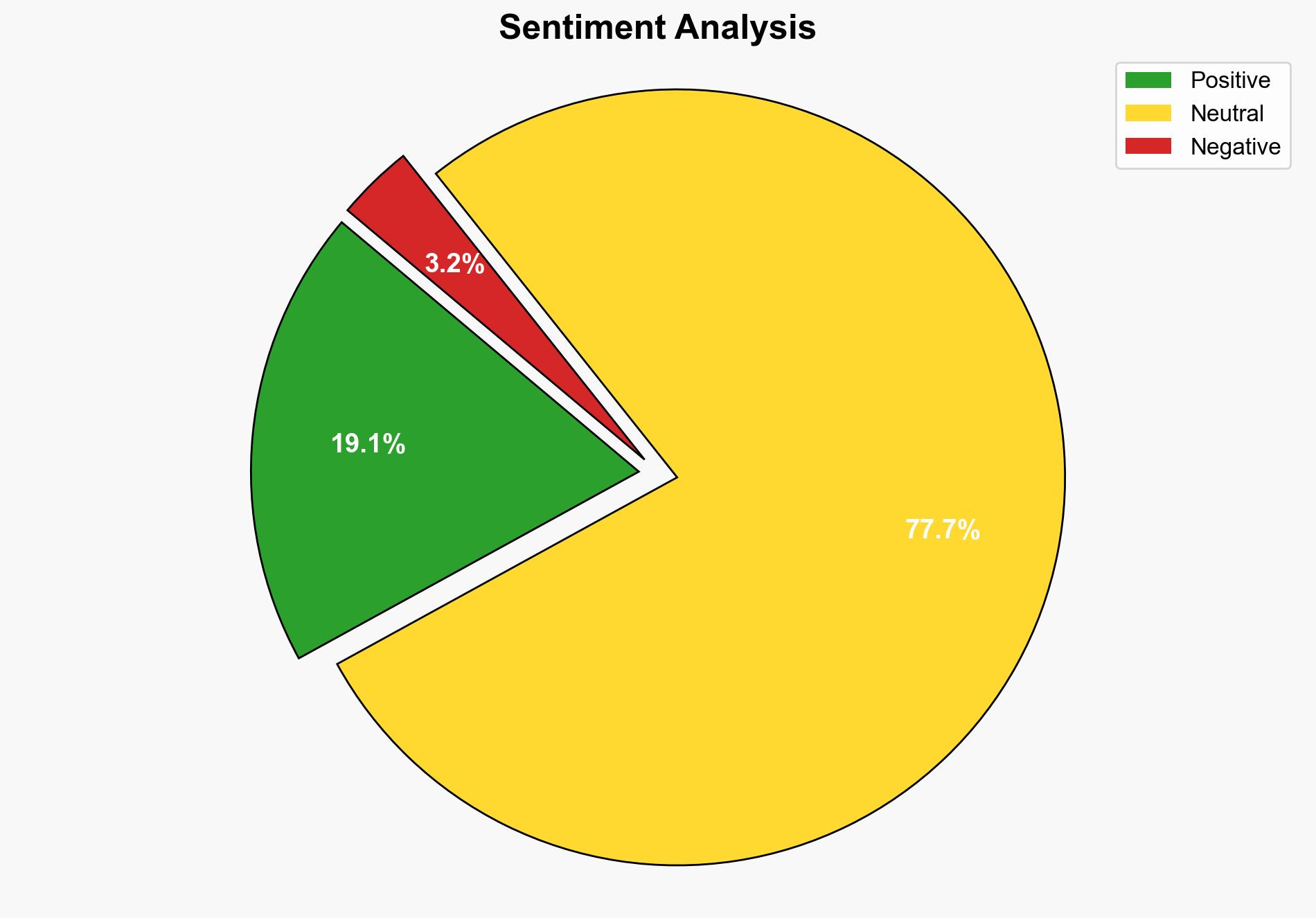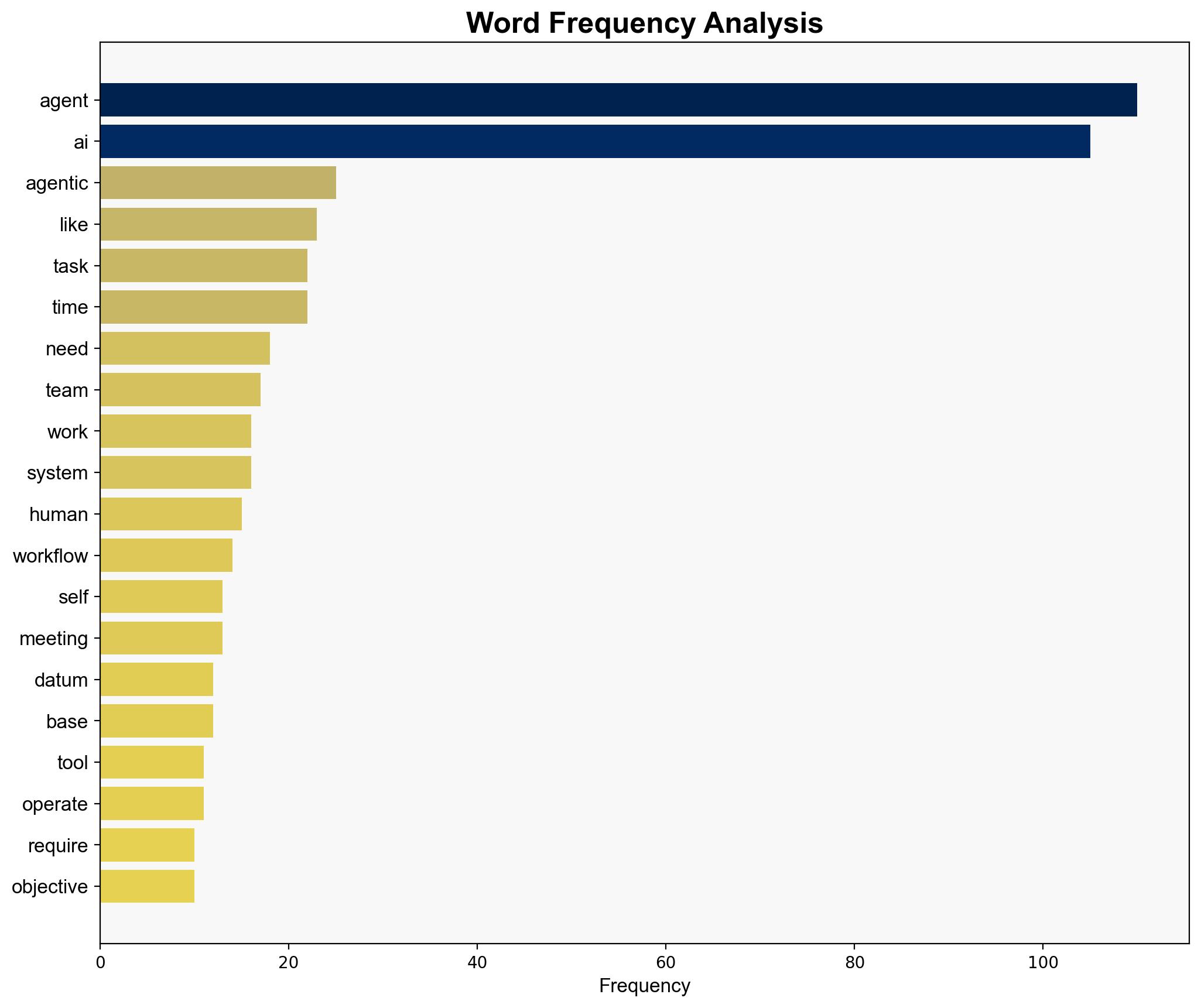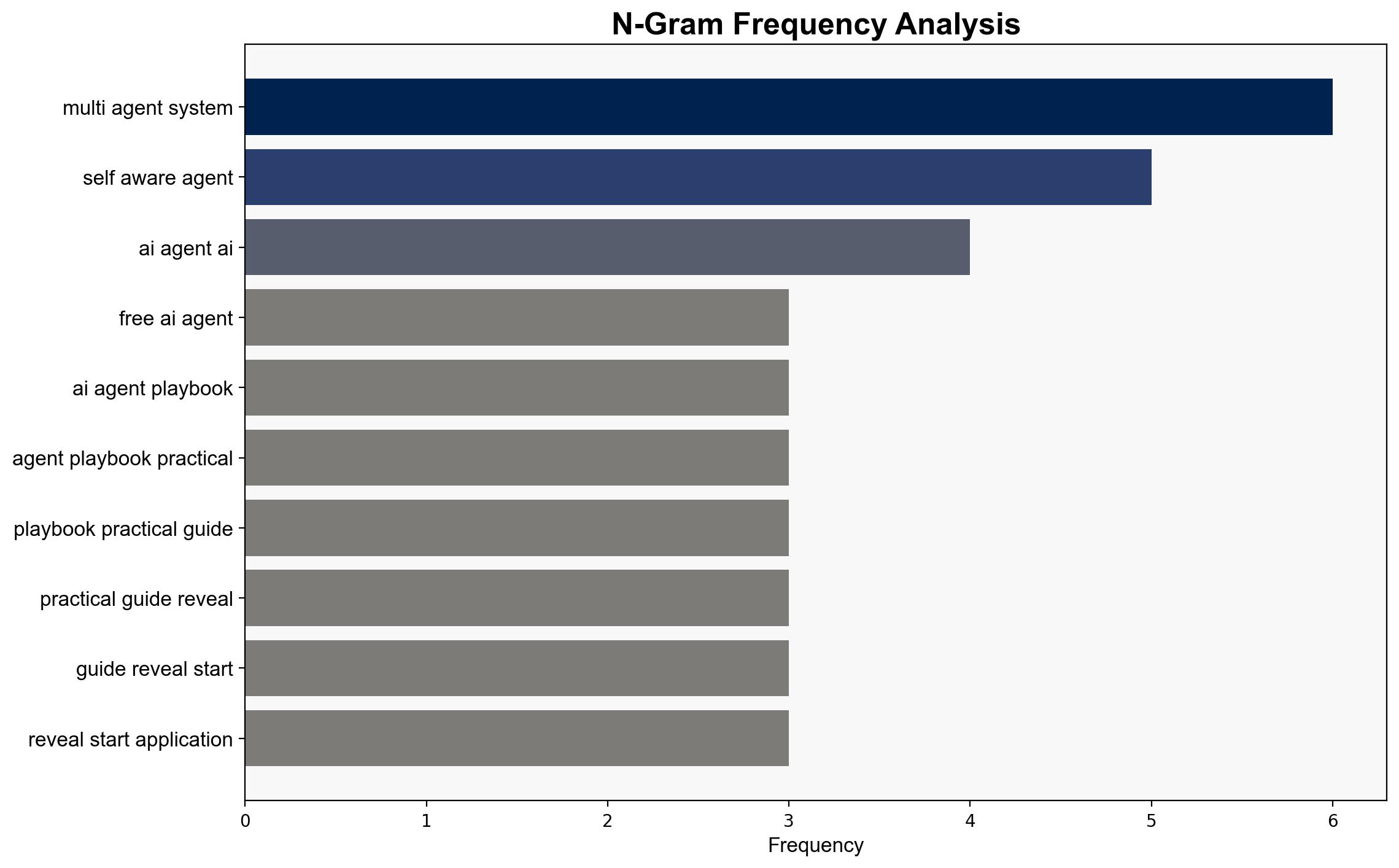A Deep Dive Into the Different Types of AI Agents and When to Use Them – Hubspot.com
Published on: 2025-04-22
Intelligence Report: A Deep Dive Into the Different Types of AI Agents and When to Use Them – Hubspot.com
1. BLUF (Bottom Line Up Front)
The report explores the evolution and application of AI agents, particularly focusing on agentic AI, which operates with a degree of autonomy and self-sufficiency. Key findings suggest that agentic AI can significantly enhance workflow automation and operational efficiency, but requires strategic oversight to ensure ethical deployment. Recommendations include developing comprehensive strategies for integrating AI agents into business processes to drive growth and optimize outcomes.
2. Detailed Analysis
The following structured analytic techniques have been applied to ensure methodological consistency:
Analysis of Competing Hypotheses (ACH)
Explored various AI agent types, assessing their capabilities and limitations. Agentic AI emerged as the most promising for autonomous task management, surpassing traditional AI systems in adaptability and efficiency.
SWOT Analysis
Strengths include enhanced automation and decision-making capabilities. Weaknesses involve potential ethical concerns and the need for human oversight. Opportunities lie in optimizing business processes, while threats include potential job displacement and security vulnerabilities.
Indicators Development
Monitored indicators include AI-driven workflow efficiency, user feedback adaptation, and the ability to autonomously manage multi-step tasks, signaling the maturity and effectiveness of agentic AI systems.
3. Implications and Strategic Risks
The integration of agentic AI poses strategic risks such as ethical dilemmas, potential job displacement, and security vulnerabilities. However, it also offers opportunities for significant advancements in operational efficiency and innovation. Cross-domain risks include the potential for AI misuse in cyber operations or economic disruptions due to automation.
4. Recommendations and Outlook
- Develop and implement ethical guidelines for AI deployment to mitigate risks of misuse and ensure compliance with regulatory standards.
- Invest in workforce training to manage the transition towards AI-enhanced operations, minimizing job displacement impacts.
- Scenario-based projections: Best case – AI agents drive unprecedented efficiency and innovation; Worst case – Ethical breaches and security vulnerabilities undermine trust; Most likely – Gradual integration with mixed outcomes.
5. Key Individuals and Entities
No specific individuals or entities are mentioned in the source text.
6. Thematic Tags
(‘AI technology, workflow automation, ethical AI deployment, operational efficiency’)





